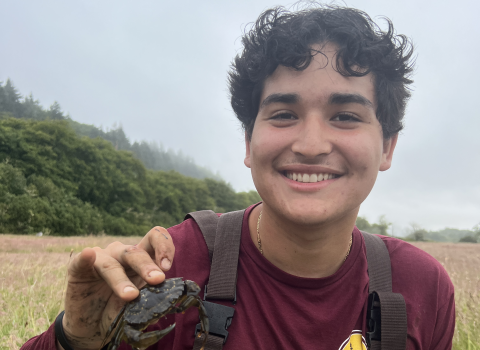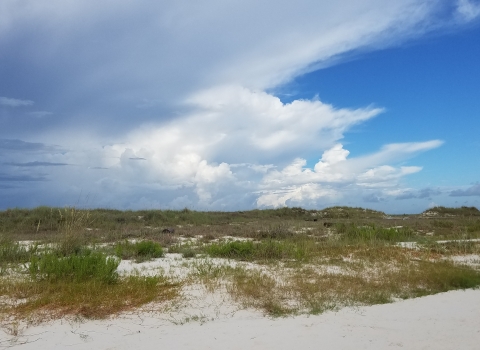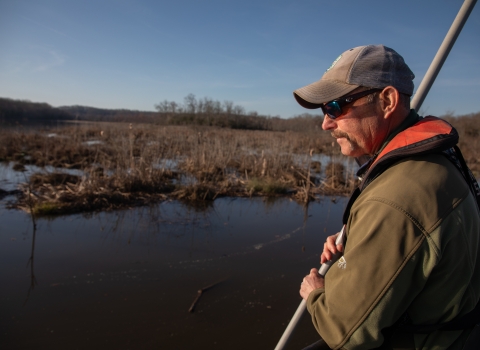When people think about the southwestern United States, most picture arid deserts and mountainous areas, however southwestern states including Arizona and New Mexico also contain riparian riparian
Definition of riparian habitat or riparian areas.
Learn more about riparian woodlands and wetlands that many species rely on. One of those species is the Chiricahua leopard frog (Lithobates chiricahuensis; “CLF”).
The CLF is a species of frog in the family Ranidae (“true frogs”) that can grow to just over 4 inches. It is often green with leopard-like spots, pale dots on the thighs of the back legs, rough skin on the back and thighs, and has a stocky body. This frog requires permanent or semi-permanent pools for breeding and water characterized by low levels of contaminants and moderate pH. They live in montane and river valley cienegas (wetland system unique to the southwestern US), springs, pools, cattle tanks, lakes, reservoirs, streams, and rivers.
Chiricahua leopard frogs primarily eat invertebrates such as beetles, true bugs, and flies, but fish and snails are also eaten. Like most frogs, they have a complex life cycle consisting of eggs, larvae, and adults (all life stages require water). Male CLF can be heard calling year-round and eggs are laid mainly from February to October, however warmer months see more males calling and more eggs being laid. CLF lay large number of eggs which metamorphose into large numbers of tadpoles because large numbers of eggs and tadpoles don’t survive to adults (they may lose up to 90 percent of eggs and tadpoles to predators). To help them survive, CLF can darken skin on their back under conditions of low light and temperature, which is believed to enhance camouflage and help them escape predation.
Chiricahua leopard frogs are federally listed as threatened under the Endangered Species Act, mainly due to threats from disease and predation by nonnative species. The CLF Recovery Plan includes information and guidance necessary for conservation, recovery and how to delist the species. This information is crucial since frog populations fluctuate throughout their range and we have many partners to help manage CLF populations. Partners include federal agencies (Bureau of Land Management, US Forest Service, US Geological Survey), state agencies (Arizona Game and Fish Department and New Mexico Department of Game and Fish), conservation and educational entities (Fort Worth Zoo, Mississippi State University, Phoenix Zoo, Turner Endangered Species Fund, The Nature Conservancy, University of Arizona, etc.), and private landowners (Arizona Game and Fish Department has a Safe Harbor Agreement that brings in private landowners who are interested in CLF conservation. Team members in New Mexico received a USFWS Recovery Champion award in 2012. Some of our partners have even been working with the CLF since before it was federally listed (e.g., Phoenix Zoo has been a CLF conservation partner since 1995). Our partners help with activities such as frog surveys, raising and releasing frogs, and restoration of ponds and streams, which all help with CLF recovery efforts. With current threats and impacts from climate change climate change
Climate change includes both global warming driven by human-induced emissions of greenhouse gases and the resulting large-scale shifts in weather patterns. Though there have been previous periods of climatic change, since the mid-20th century humans have had an unprecedented impact on Earth's climate system and caused change on a global scale.
Learn more about climate change , these continued conservation efforts are key to the species’ recovery.
To learn more about Chiricahua leopard frog conservation and recovery efforts visit the USFWS species page and some of our partner agency webpages below.
US Fish and Wildlife Service Chiricahua leopard frog species page
Arizona Game and Fish Department Chiricahua leopard frog and drought YouTube video
Fort Worth Zoo – Chiricahua leopard frog work
New Mexico Department of Game and Fish


